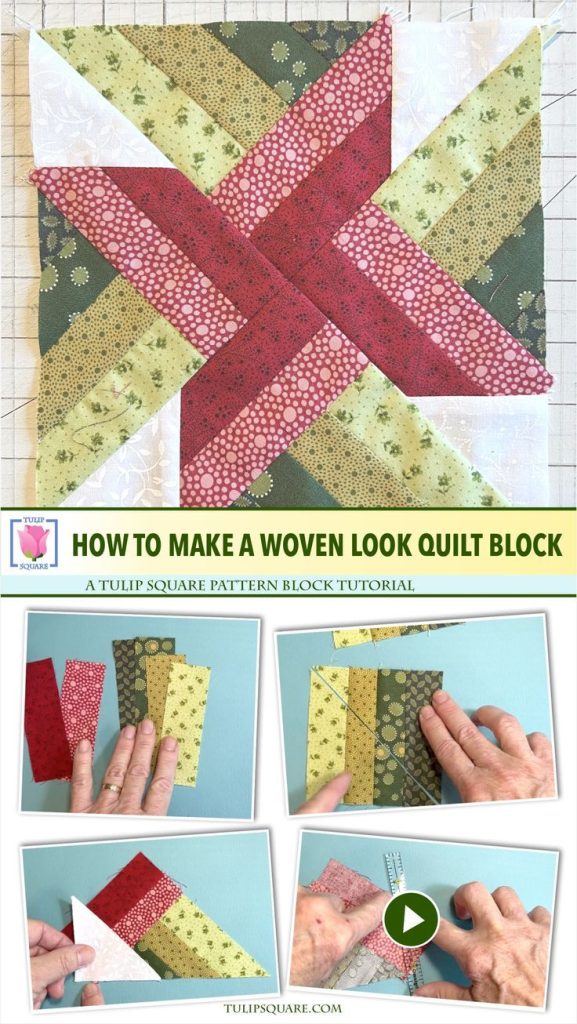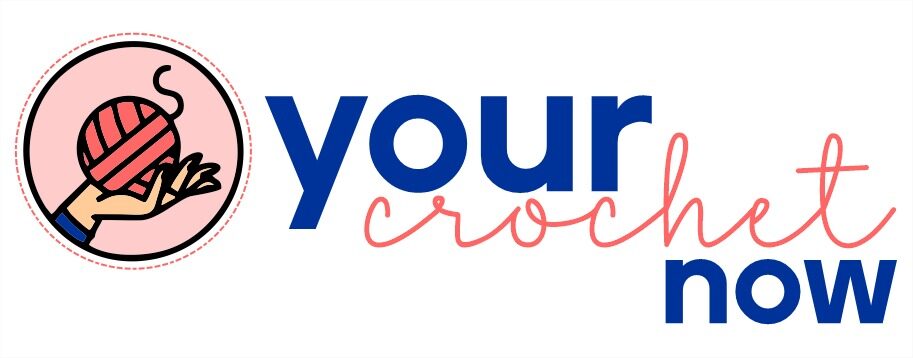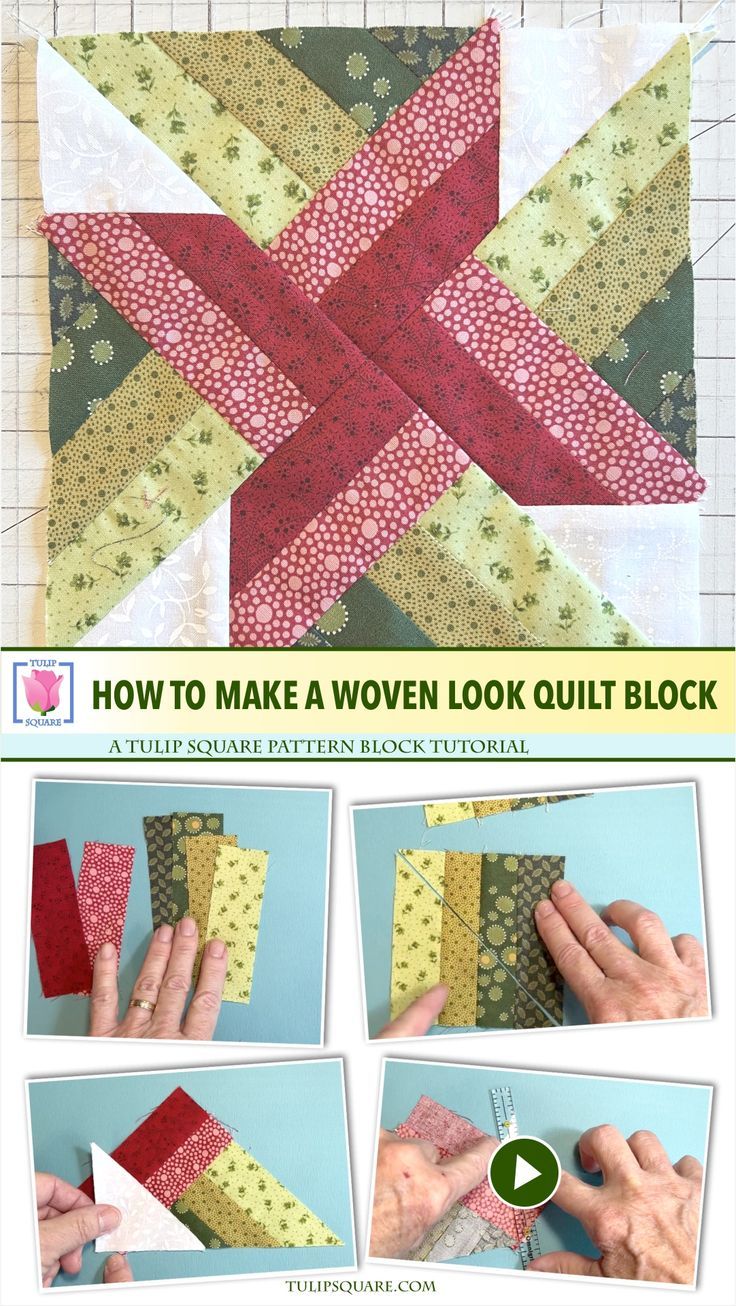Quilting has long been a creative and rewarding craft, allowing makers to express themselves through fabric and design. One of the most visually striking quilt patterns is the woven quilt block, which mimics the look of a basket weave. This block is a great addition to any quilt, especially for quilters seeking a modern twist on traditional designs.
In this blog post, you’ll learn how to make a woven quilt block using a simple step-by-step process. We’ll include exact fabric cut sizes and tips to help your block come out crisp and aligned. Whether you’re new to quilting or a seasoned creator, this guide will help you add a unique touch to your quilt projects.
Our article also incorporates SEO best practices and focuses on the essential keywords quilt and quilt patterns, making it easier for fellow crafters to find this guide. So, grab your rotary cutter and cutting mat—we’re about to start weaving some quilting magic!
What is a Woven Quilt Block?
A woven quilt block is designed to mimic the appearance of over-under weaving, similar to a basket weave. The block uses a series of strips placed horizontally and vertically to create the illusion of fabric being woven together. It’s a simple but visually impactful design that looks more complex than it is.
This block can be customized using a wide range of fabric colors, making it versatile for both modern and traditional quilt patterns. By playing with light and dark fabrics, quilters can enhance the woven illusion and create dramatic effects. It’s perfect for scrap quilts or for highlighting a favorite fabric line.
Woven quilt blocks are a favorite among modern quilters because of their bold geometry and texture. While the assembly requires precision, the results are worth the effort. Once you learn this pattern, it can easily be used to make an entire quilt or incorporated as an accent block.
Materials You’ll Need
Before starting, gather all the tools and materials required to complete the woven quilt block. The good news is that it doesn’t require any fancy equipment—just basic quilting supplies you likely already own. The finished block size will be 12.5” x 12.5” (unfinished).
Here’s what you’ll need:
- Rotary cutter and mat
- Quilting ruler
- Iron and pressing board
- Sewing machine
- Fabric scraps or fat quarters
For this quilt pattern, you will need three different fabrics—one for the vertical strips, one for the horizontal strips, and one for the background. Each color should contrast with the others to enhance the woven look.
Fabric Cuts and Measurements
Precision is key in quilting, and accurate cutting is the first step to creating a clean woven quilt block. Below are the fabric requirements for one 12.5″ woven quilt block.
Cut the following:
- From Fabric A (horizontal strips):
- (3) strips 2” x 12.5”
- From Fabric B (vertical strips):
- (3) strips 2” x 12.5”
- From Fabric C (background):
- (6) rectangles 2” x 2”
These measurements are designed to ensure that your woven block comes together neatly with a balanced, symmetrical layout. Keep your ruler steady and use a sharp rotary blade for best results. Once all pieces are cut, press them to remove any folds or wrinkles before you begin sewing.
Laying Out the Woven Design
Lay your pieces out on a flat surface or design board to visualize the woven effect. Start by placing the three horizontal strips (Fabric A) evenly spaced from top to bottom. Next, add the vertical strips (Fabric B), weaving them over and under the horizontal ones.
To create the woven look, alternate the way vertical strips interact with the horizontals:
- Strip 1: Over, Under, Over
- Strip 2: Under, Over, Under
- Strip 3: Over, Under, Over
Insert the 2” x 2” background squares (Fabric C) in the corners and between the strips where they intersect. These filler pieces are essential for giving the block its woven appearance and maintaining square edges. Adjust the pieces until you’re satisfied with the layout.
Sewing the Rows
Once you’ve laid out your pieces, start by sewing each row together. Begin with the horizontal rows: each row will alternate between a strip and a square. For example, a row might follow this layout: [Fabric C] – [Fabric A] – [Fabric C].
Use a ¼” seam allowance for all stitching, which is standard for quilt patterns. Sew slowly and carefully to maintain consistent seam widths, which will help the block come out to the correct size. After sewing, press each row flat with the seams facing the same direction.
Continue with the other rows in the same way. The goal here is to keep all pieces aligned while preserving the woven illusion. Pressing after each row is essential to keeping the quilt block square and neat.
Assembling the Block
With the rows completed, it’s time to assemble the full quilt block. Align the rows carefully, paying attention to the corners and intersections where strips meet. Pin each row before sewing to ensure nothing shifts during stitching.
Sew the rows together one at a time, always maintaining the ¼” seam allowance. Take your time—this part of the process requires precision. The cleaner your seams, the more professional your final quilt block will look.
After all rows are sewn together, give your block one final pressing. Use steam if needed to flatten bulky seams. The finished block should measure 12.5″ square, allowing for a perfect 12″ finished block once sewn into a quilt.
Tips for a Flawless Woven Block
Choose high-contrast fabrics to make the woven effect pop. Solid colors work beautifully, but small prints can also be effective if they don’t distract from the block’s structure. Avoid fabrics with directional patterns unless you’re confident in aligning them correctly.
To maintain consistency across multiple blocks, consider creating a template or diagram to follow. This can help you save time and reduce layout errors. Chain-piecing similar sections also speeds up the process if you’re making more than one woven block.

Finally, remember to square up your block after finishing it. This will help during final assembly into a larger quilt. A square, flat block is essential for smooth piecing and quilting.
Project Ideas Using the Woven Quilt Block
The woven quilt block can be used as the centerpiece for a pillow, table runner, wall hanging, or even an entire quilt. Its modern and geometric look fits beautifully in minimalist or contemporary quilting projects.
You can also alternate the block with solid squares or sashing strips to create interesting secondary patterns. The woven illusion stands out best when placed side-by-side, giving your quilt a dynamic, interlaced appearance.
Try using this block in a monochromatic quilt, using different shades of a single color. Or go bold with complementary colors for contrast. The options are endless, making this one of the most flexible quilt patterns available.
Final Thoughts
The woven quilt block is a fun and rewarding pattern to make. Its clean lines and dimensional look make it a standout in any quilting project. Whether you’re using it as a feature block or building an entire quilt around it, this block is sure to impress.
By following this guide, you’ve learned not just the construction process, but also how to properly cut and assemble the fabrics for a clean and cohesive result. The more you practice, the easier it becomes—and soon you’ll be able to create this woven pattern from memory.
Don’t forget to share your creations online! Quilting communities love to see new twists on classic quilt patterns. Tag your projects with hashtags like #wovenquiltblock and #modernquilt to connect with others and get inspired.

